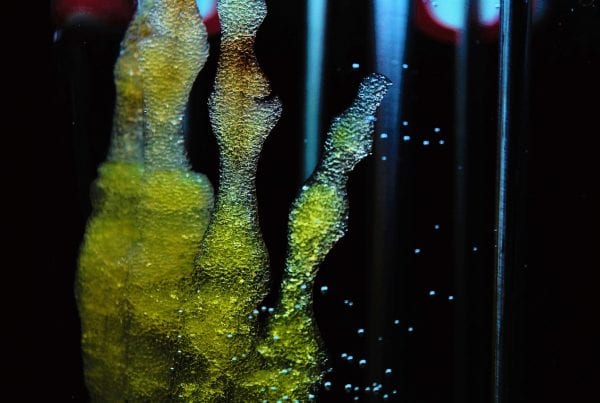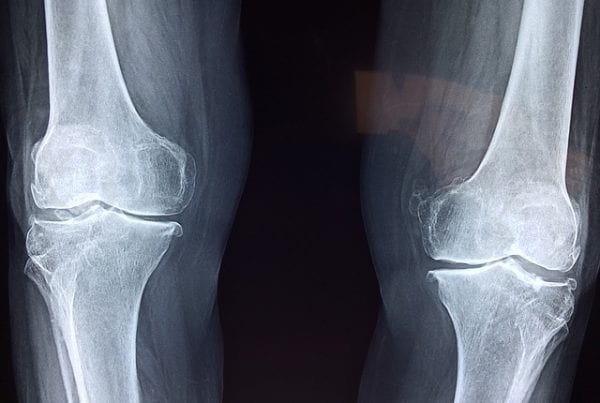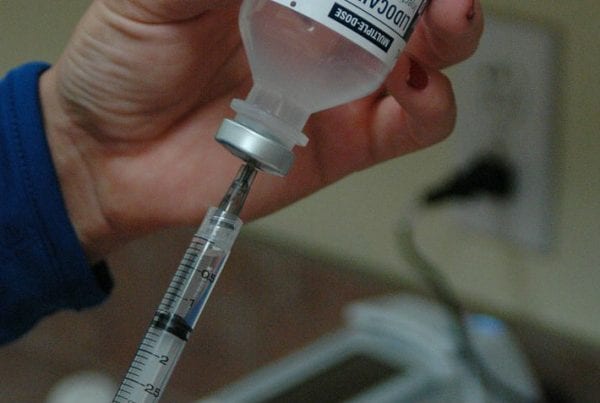Since its introduction in 2013, the vampire facial has grown in popularity and is widely accepted by celebrities and everyday people, both young and old. This popular procedure, invented by an Alabama medical doctor named Charles Runels, is the latest facial rejuvenation treatment that can help you achieve a glowing, younger, and healthier look.
What is a Vampire Facial?
The vampire facial is a skin care treatment which involves using platelet-rich plasma (PRP) or platelet-rich fibrin matrix (PRFM) combined with micro-needling procedures to cause a collagen-inducing process in the skin. The objective is to grow new skin tissue which will, in turn, result in improved skin texture and appearance.
Unlike the traditional vampire facelift, the vampire facial doesn’t involve any injection with a syringe. The micro-needling is done over the top layer of skin on your face or neck, and the PRP will be spread over the area. A vampire facial can help you:
- Get rid of deep creases
- Plump up sagging skin
- Improve your complexion
- Diminish acne scars
- Reduce wrinkles
What is Platelet-Rich Plasma (PRP)
Platelet-rich plasma, popularly called PRP, is in the class of regenerative autologous, which means it is obtained from your whole blood. Platelets are essential components that are very rich in protein that can help blood clotting. However, it has been discovered that platelets can do so much more than just forming a clot to stop bleeding after an injury. Whenever your body senses an injury, platelets will aggregate at the injured site and attract stem cells to the area.
What Exactly Do Stem Cells Do?
Stem cells are unique kinds of human cells which function as building blocks that repair damaged tissue. They are present in various organs and tissues in the body. They have the ability to divide and each new cell has the potential to either remain a stem cell or develop into another cell type with a more specialized function, such as red blood cell, brain cell, or muscle cell. They can also develop into new skin, cartilage, bone, or blood vessel cells.
When PRP is applied, it amplifies the body’s healing ability by sending concentrated platelets into the injured area. This procedure has long been utilized in regenerative medicine to treat different kinds of conditions and injuries, including tendonitis and arthritis.
The same procedure is what is applied in the vampire facial approach, but in this case, it is spread over induced and controlled micro-injuries.
How is Platelet-Rich Plasma Derived?
PRP isolation is a laboratory procedure performed by a clinician or physician following the standardized protocols. The clinician begins by drawing out a blood sample from your body.
The whole blood contains several elements, such as red blood cells, white blood cells, and platelets. It will then be processed to separate the needed platelets from other blood components.
This isolation is done by placing the whole blood in a centrifuge machine, which will then spin it at high speeds, causing the needed platelets to separate from other blood materials. Then the isolated PRP will be prepared and made ready to be used for your vampire facial procedure.
How is a Vampire Facial Performed?
A vampire facial consists of two major procedures – PRP isolation (explained above) and micro-needling. Your face and neck will be thoroughly disinfected before needling. Once the platelet-rich plasma is ready, then the physician will cause controlled micro-injuries in your face and neck through micro-needling.
Microneedling is a process that involves using very small needles to puncture holes in the epidermis (the outer layer of your skin) as the device gently passes over your face and neck. This might sound painful, but it is a very safe, efficient, quick, and relatively painless procedure.
The purpose is for your skin to stimulate collagen and elastin in the outer layer to improve its appearance and texture. The micro-needling will be followed by the PRP application. The earlier prepared platelets will be slathered across you needled face and neck.
What Should I Expect After Treatment?
The vampire facial is an outpatient treatment that doesn’t require any downtime. The entire procedure is completed within 45 minutes to an hour and you can leave your doctor’s office immediately after the procedure. You will begin to notice results in a few weeks after the first session.
Research on the Vampire Facial
Platelet-rich plasma (PRP) used in the vampire facial was introduced in the 1970s in the field of hematology. The “platelet-rich” concept was due to the fact that the derived and isolated plasma has a platelet count above the peripheral blood, which was initially being used as a transfusion product to treat thrombocytopenia patients.
Since its discovery, PRP has been investigated for its efficacy, tolerability, and safety by various researchers in different fields of medicine. The clinical studies were based on different conditions. Also, numerous studies are underway to further explore the efficacy and application of the procedure. The following are examples of some of the available platelet-rich plasma research:
Face and Neck Revitalization
Face and neck revitalization with platelet-rich plasma is an application that is currently being explored. This practical study, published by the U.S. National Library of Medicine, was conducted to evaluate the real outcomes, side effects, and benefits of this standardized injection procedure. The study had 23 patients who underwent three-months of consecutive treatment sessions. In each session, patients received one session of PRP injections every month from September to December 2008 to complete a total of three sessions.
A sterile Regen Lab Kit was used for blood management. Each patient received 4 ml of PRP, activated with calcium chloride, at standard injection spot into face and neck skin. Before and after images of the participants were taken to evaluate the outcome of the study.
Results were assessed a month after the last session using a special spider improvement score, a patient’s and doctor’s satisfaction score, and a photograph score. A definitive graduated score was also calculated for each patient. The overall results were satisfactory, and there were no serious or persistent side effects detected. In conclusion, the study affirmed that platelet-rich plasma is a promising, easy-to-perform method for face and neck rejuvenation and scar attenuation.
Induction of Dermal Collagenesis, Angiogenesis, and Adipogenesis in Human Skin
Collagenesis is the process of new collagen layer formation in the skin to improve the texture and appearance of the skin. Angiogenesis is the formation of new blood vessels, which involves endothelial cell migration, growth, and differentiation. Adipogenesis is the process by which body fat cells differentiate from preadipocytes to adipocytes. These three factors are very crucial in the growth and healing process of the body.
The objective of this study was to evaluate the histological changes caused in human skin by the injection of autologous platelet-rich fibrin matrix (PRFM). Just like platelet-rich plasma, the platelet-rich fibrin matrix is also derived from the patient’s own whole blood. The only difference is the preparation method. While PRP is separated by centrifuge at high speed, the spinning process of PRFM is slower, which allows a higher concentration of platelets and other stem cell properties. Both can be applied following the same procedure and for the same conditions.
The study involved four healthy adult volunteers who received PRFM injections prepared from 9 ml of autologous blood drawn from each patient. PRFM was injected into the deep dermis (inner skin layer) and immediate sub-dermis (subcutaneous tissue) of the upper arms of the participants. Full-thickness skin specimens were taken from the treated areas over a 10-week period and the samples were processed for histological evaluation.
As early as seven days after treatment, new collagen deposition and activated fibroblasts were noted and continued to be evident all through the course of the study. After 19 days, the formation of new blood vessels was noted, and intradermal collections of adipocytes and subdermal adipocyte stimulations were also noted.
As the study progressed, these encouraging findings became more pronounced. Although the fibroblastic response became less pronounced during the course of the study, the results were generally satisfactory. On safety, though a very mild chronic inflammatory was noted only at the earliest stages of the research, no abnormal mitotic figures were observed throughout the study period.
It was concluded that PRFM injections into the deep inner and subcutaneous layers of the skin stimulate cellular changes that can be harnessed for use. The results from the study also gave a clearer picture of the cellular effects of PRFM and its potential application in facial plastic surgery.
Use of Platelet-Rich Plasma and Hyaluronic Acid in the Loss of Substance With Bone Exposure
In lower-extremity surgery, one very challenging problem for plastic surgeons is bone exposure. The objective of this study was to describe a new therapeutic method to help stimulate the regeneration of the lower-extremity complex wounds using a combined treatment composed of platelet-rich plasma (PRP) and hyaluronic acid (HA) dressing.
Some patients were also treated with HA dressing alone. The study had 15 patients who were affected by a lower extremity wound with post-traumatic bone exposure. They had been treated at the Department of Plastic and Reconstructive Surgery of the University of Tor Vergata, Italy.
Results from the study showed that after a single treatment, the authors observed that the mean re-epithelialization time was 8.1 weeks in 73.3 of patients who received PRP with HA dressing versus in only 30% of patients treated with HA alone.
In conclusion, the data derived helped confirmed the evidence of using PRP technology in the healing process of both soft and hard tissue wounds. Also, patients generally expressed satisfaction with the quality of the study and results.
Use of Cell Fat Mixed With Platelet Gel in Progressive Atrophy
Progressive hemifacial atrophy (PHA) or Parry-Rober syndrome is a common degenerative condition that is poorly understood. It is characterized by the gradual slow deterioration of the skin and soft tissue which mostly occurs on one side of the face. However, it is sometimes noticed on both sides of the face, on the arms, trunk, and/or leg.
It usually begins around age ten, and in some cases, as early as infancy. The incidence and cause of PHA are unknown, and the pathogenesis of its associated symptoms is also unknown. Some authors attribute it to an alteration of the sympathetic system. There are other professionals who also attribute it to an alteration of the nervous system.
Facial disorders, trigeminal neuritis, and epilepsy are the most common complications resulting from PHA. The condition may worsen between 2 and 20 years before becoming stable. After stabilization, plastic surgery of the autogenous grafts can be performed.
The focus of this study was to suggest a therapeutic plan through the presentation of clinical cases. The suggested plan is comprised of two sequential treatments, involving the acquisition of platelet gel from a small blood volume of 9 ml for reconstructing the three-dimensional projection of the face contour and restoring the density of the facial tissue. The results obtained from the study showed the efficacy of the two treatments combined, and the satisfaction of the patient also confirmed the quality of the results.
Though each of the studies and many other related works recommended that more research be carried out for better understanding the subject covered, they all demonstrated the efficacy, tolerability, and safety of PRP used in the vampire facial procedure.
How Long Does It Take to See Results of Vampire Facials?
The full effects of the vampire facial usually appear within a few weeks or months. This is when the elastin- and collagen-inducing mechanisms in the injected product have been able to take effect. Findings have shown that most patients who get results do undergo three or more treatment sessions.
Sometimes, dermatologists may inject a filler along with the platelet-rich plasma to help achieve more immediate results. The results may last for several months or years after. Some people repeat the process in 18- to 24- month intervals to maintain a younger and healthier look.
Is the Vampire Facial Procedure Right for Me?
Vampire facials are considered safe for most people whether you just want a better look or would like to augment certain areas in your skin. However, it is not recommended for those who have certain pre-existing conditions. To be sure you are a candidate we recommend that you seek your doctor’s advice. If you have any of the following conditions, the procedure may not be ideal for you:
- HIV or AIDS
- Hepatitis C
- Any type of blood cancer
- Skin cancer, especially in the area to be treated
- Cardiovascular disease
How Much Does a Vampire Facial Cost?
The price varies depending on the area to be treated and how many sessions you are to undergo. In the U.S., it is estimated that the cost for each session ranges from $250 to $1,500 per treatment. Because it is a treatment used to improve a person’s appearance, the cost is often not covered by medical insurance.
How Modern Therapy MD Can Help
Choosing the right healthcare provider and following standardized guidelines will make a big difference in the overall outcome of your skincare treatment.
Here at Modern Therapy, we use state-of-the-art medical technologies to provide our clients with the best health and beauty management medical services. We render services and consultation for different kinds of cosmetic concerns and degenerative conditions. For your best skin care treatment, you can book an appointment with us today by filling out this contact form.
References
https://www.ncbi.nlm.nih.gov/pubmed/18704559
https://link.springer.com/article/10.1007%2Fs00266-008-9223-x
https://www.ncbi.nlm.nih.gov/pubmed/20480789
https://jamanetwork.com/journals/jamafacialplasticsurgery/fullarticle/1150976
https://www.womenshealthmag.com/beauty/a23132469/what-is-a-vampire-facial/



